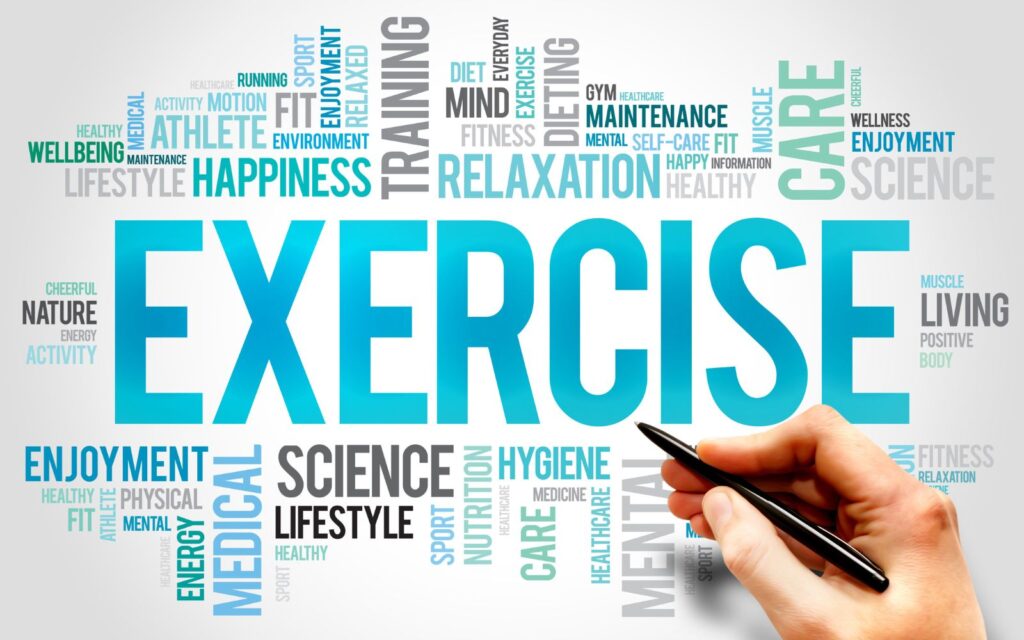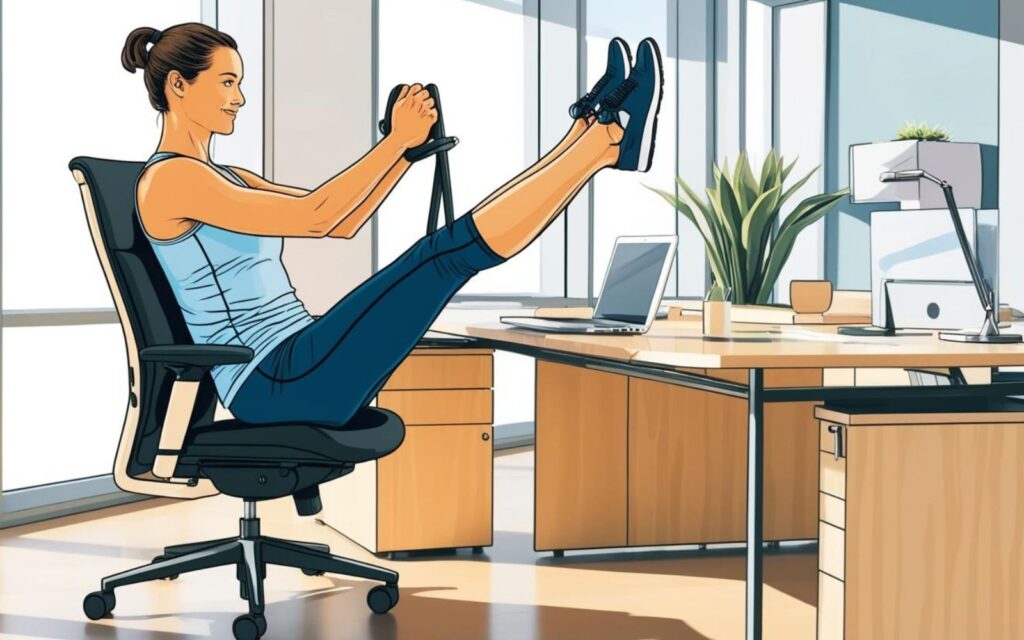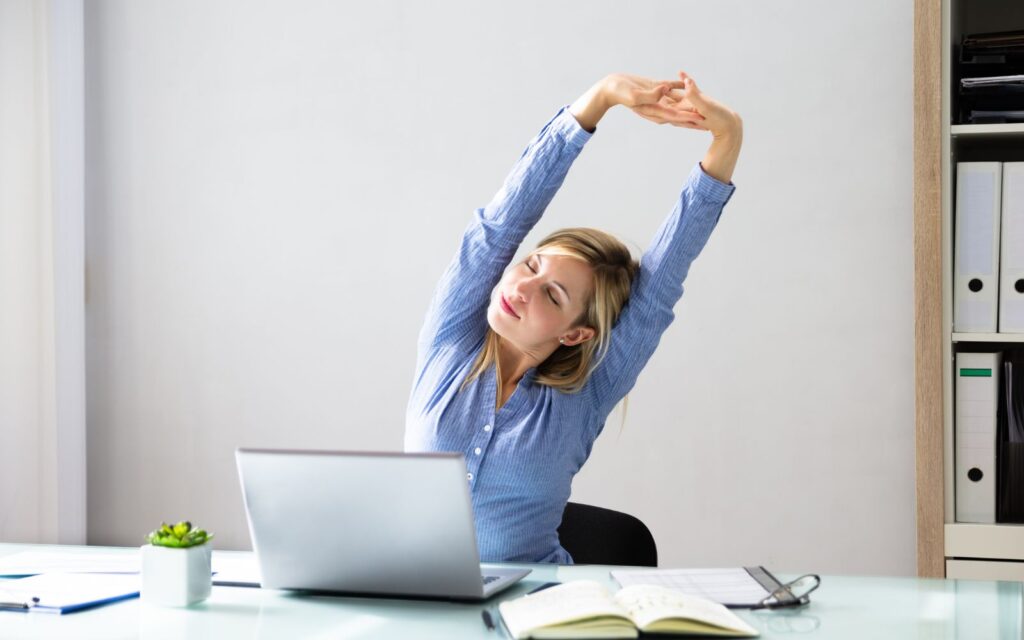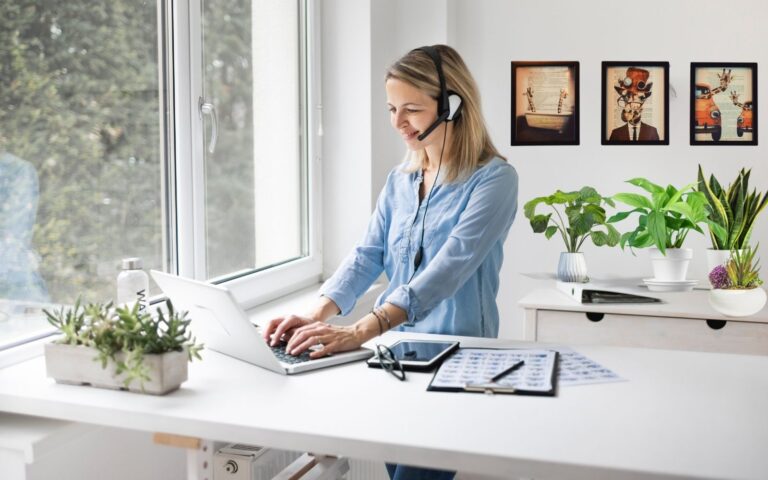10 Best Office Exercises to Boost Physical Wellness and Combat Fatigue

Did you know the average adult spends over six hours a day sitting? You might spend even more time glued to your desk chair if you’re an office worker.
Sitting for long periods can lead to muscle tension, poor physical health, and even mental strain.
The good news is that with a few simple exercises, you can counteract the adverse effects of a desk job and feel better throughout your day!
In this article, we’ll explore the best office exercises to boost physical wellness, enhance work performance, and improve mental clarity and physical well-being.
Key Takeaways
- Regular desk exercises reduce the impact of prolonged sitting and prevent chronic pain.
- These exercises are discreet, require no special equipment, and can be done in a few minutes.
- Movement throughout the day can improve circulation, reduce muscle pain, and enhance employee health.
Why Do Office Exercises Matter?

Sitting for long periods at work can strain your body and mind. Research shows sedentary jobs increase the risk of physical and mental health issues, such as:
- Chronic pain in the back, neck, and shoulders
- Reduced circulation, leading to fatigue
- Increased stress levels
The solution? Incorporate discreet exercises into your workday routine to combat the adverse effects of a sedentary lifestyle.
10 Best Office Exercises to Boost Physical Wellness
1. Chair Stretch

Ease tight shoulders and improve posture with this stretching exercise:
- Sit on your desk chair with your feet flat on the floor.
- Clasp your arms overhead and slowly stretch upward.
- Hold for 10–15 seconds, then relax.
This move helps reduce muscle tension caused by sitting for long periods.
2. Desk Push-Ups

Strengthen your upper body with this simple move:
- Place your hands shoulder-width apart on the edge of your desk.
- Step back to form a straight line with your body.
- Slowly lower yourself toward the desk, then push up to return to the starting position.
Aim for 10–15 reps to build upper body strength and energize your day.
3. Seated Leg Lifts

Work your lower body without leaving your chair:
- Sit with your feet flat on the floor.
- Extend one leg straight out before you and hold for 5 seconds.
- Slowly lower it back down and switch to the other leg.
Do 10 reps per leg to improve circulation and tone your inner thighs.
4. Chair Squats

This classic move strengthens your lower body and core:
- Stand facing your chair with your feet shoulder-width apart.
- Lower your hips toward the seat as if you’re about to sit down, but stop just before touching it.
- Stand back up and repeat.
Do 12–15 reps for strong thighs and glutes!
5. Shoulder Rolls

Combat tight shoulders from typing all day:
- Sit upright and roll your shoulders forward in a circular motion for 10 seconds.
- Reverse the motion and roll backward for another 10 seconds.
This exercise improves mobility and reduces muscle tension in the neck and shoulders.
6. Calf Raises

Feeling stiff legs from too much sitting? Try this simple move:
- Stand near your desk for support.
- Lift onto your toes, hold briefly, and then slowly lower back down.
- Repeat for 15–20 reps.
Calf raises boost circulation and keep your legs active throughout the day.
7. Neck Stretches

Ease neck tension with this relaxing stretch:
- Tilt your head toward one shoulder and hold for 10 seconds.
- Repeat on the opposite side, then tilt your head forward and backward.
This stretch helps prevent muscle pain in your neck from staring at screens too long.
8. Arm Stretches

Stretch your arms to release tension:
- Extend one arm across your chest and hold it in place with your left hand.
- Switch sides and repeat.
These stretching exercises are great for loosening tight arms and shoulders.
9. Mini Walking Breaks

Sometimes, the best exercise is simply getting up and walking:
- Take a quick lap around your office every hour.
- Use the stairs or grab a water bottle from another floor.
These little bursts of movement keep you energized and prevent physical strain.
10. Under Desk Bikes or Treadmill Desks

If you’re looking for a more dynamic solution, try under-desk bikes or treadmill desks:
- Pedal gently during meetings or brainstorming sessions.
- Walk at a slow pace while working on tasks.
These tools are fantastic for improving circulation and combating sedentary jobs.
Tips to Incorporate Exercises Into Your Day
- Set reminders to move: Apps or alarms can prompt you to take breaks.
- Use bike desks or small weights at your desk.
- Try breathing exercises during stressful moments to relax.
- Create a work environment that encourages movement, like standing desks or walking meetings.
Summary
Slight movements can make a big difference, whether it’s a quick shoulder roll, a few chair squats, or a stroll around the office.
These desk exercises can help you combat the effects of prolonged sitting, improve physical well-being, and even boost your job satisfaction.
Make these movements a regular workday routine to feel better, stay energized, and maintain mental clarity.
Frequently Asked Questions
How Do Office Exercises Help Physical Health?
They reduce muscle tension, improve circulation, and combat the effects of sitting for long periods.
Can Office Exercises Prevent Chronic Pain?
Yes, many of these simple exercises can ease muscle pain and prevent stiffness in neck, shoulders, and back areas.
What Are Some Discreet Exercises for Office Workers?
Moves like desk push-ups, calf raises, and neck stretches can be done without drawing attention.
Do Desk Exercises Improve Mental Well-Being?
Absolutely! Regular movement boosts mental clarity, reduces stress, and enhances employee health.
Are Tools Like Under-Desk Bikes or Treadmill Desks Worth It?
These tools encourage movement during sedentary tasks, promoting better physical wellness and reducing physical strain.






2 Comments